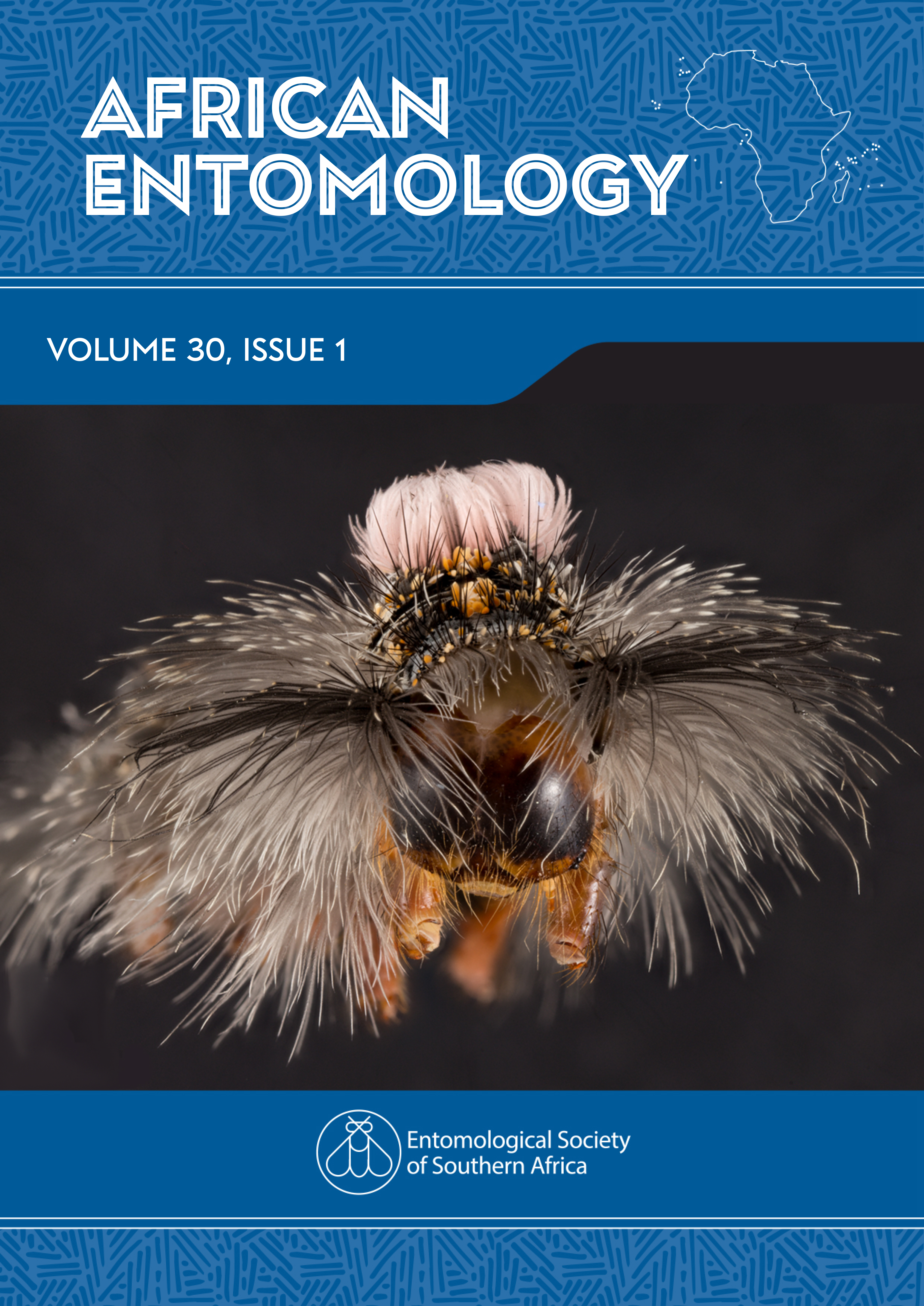Solifugae (Arachnida): Indigenous Southern African names and their meanings
DOI:
https://doi.org/10.17159/2254-8854/2022/a10696Abstract
The order Solifugae (Arachnida) often has the word ‘spider’ (e.g. sunspider, camelspider) or ‘scorpion’ (e.g. windscorpion) as the main descriptor in its common names. Being neither a spider nor a scorpion, we suggest ‘solifuge’, derived from the scientific name of the order, as the most neutral English vernacular name for these arachnids. Southern Africa is rich in solifuge diversity, which is also reflected in the rich and imaginative local vernacular names of this group. These names allude to myths associated with solifuges, to their characteristic behaviours, or to their unique and striking morphology. Here we briefly translate and discuss 40 vernacular terms used for solifuges in 25 languages and dialects in southern Africa (Botswana, Malawi, Namibia, South Africa, and Zimbabwe), plus seven names in five languages in East Africa. Recognising solifuges as a distinct group, referred to by its own set of vernacular names, seem to be more common in rural, compared to urban areas. The conservation of indigenous names of animals might be inextricably linked to the conservation of these animals.
Downloads
References
Bird TL, Wharton RA, Prendini L. 2015. Cheliceral morphology in Solifugae (Arachnida): primary homology, terminology, and character survey. Bulletin of the American Museum of Natural History 394: 1–355. https://doi.org/10.1206/916.1 DOI: https://doi.org/10.1206/916.1
Dippenaar-Schoeman AS, González Reyes AX, Harvey M. 2006. A check-list of the Solifugae (sun-spiders) of South Africa (Arachnida, Solifugae). African Plant Protection 12: 70–92.
Dippenaar-Schoeman AS. 1993. Sun-spiders, some interesting facts. African Wildlife 47: 120–122.
Du Plessis M. 2019. The Khoisan languages of southern Africa: facts, theories and confusions. Critical Arts 33(4–5): 33–54. https://doi.org/10.1080/02560046.2019.1647256 DOI: https://doi.org/10.1080/02560046.2019.1647256
Gorenflo LJ, Romaine S, Mittermeier RA, Walker-Painemilla K. 2012. Co-occurrence of linguistic and biological diversity in biodiversity hotspots and high biodiversity wilderness areas. Proceedings of the National Academy of Sciences 109(21): 8032–8037. https://doi.org/10.1073/pnas.1117511109 DOI: https://doi.org/10.1073/pnas.1117511109
Holm E, Dippenaar-Schoeman AS. 2010. GOGGAgids. Die Geleedpotiges van Suider-Afrika. 1st Edition. Lapa Uitgewers, Pretoria.
Lawrence RF. 1963. The Solifugae of South West Africa. Cimbebasia 8: 1–28.
Lawrence RF. 1967. The life of the sun-spider. African Wild Life. 10–16.
Neethling JA, Haddad CR. 2019. Influence of some abiotic factors on the activity patterns of trapdoor spiders, scorpions and camel spiders in a central South African grassland. Transactions of the Royal Society of South Africa 74(2): 107–114. https://doi.org/10.1080/0035919X.2019.1596177 DOI: https://doi.org/10.1080/0035919X.2019.1596177
Oswald JM. 2012. Know thy enemy. Camel spider stories among US troops in the Middle East. In: Eliason EA, Tuleja T. (Eds). Warrior Ways: Explorations in Modern Military Folklore. University Press of Colorado. https://doi.org/10.7330/9780874219043.c02 DOI: https://doi.org/10.7330/9780874219043.c02
Punzo F. 1998. The Biology of Camel Spiders (Arachnida, Solifugae). 1st Edition. Kluwer Academic, Boston. 301 pp. DOI: https://doi.org/10.1007/978-1-4615-5727-2_1
Wharton RA. 1987. Biology of the diurnal Metasolpuga picta (Kraepelin) Solifugae, Solpugidae) compared with that of nocturnal species. Journal of Arachnology 14: 363–383.
Downloads
Published
Issue
Section
License
Copyright (c) 2022 Tharina Bird, Lefang Chobolo, Audrey Ndaba

This work is licensed under a Creative Commons Attribution 4.0 International License.




.png)